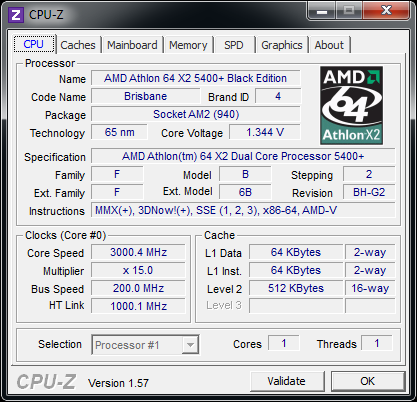Tom's CPU Architecture Shootout: 16 CPUs, One Core Each, And 3 GHz
The CPU landscape is really complex. Both AMD and Intel offer tons of different models. But how would today’s processors perform if they didn't have multiple cores? We take 16 different CPUs and compare them all using a single core running at 3 GHz.
Outdated Dual-Core Designs: AMD Windsor And Intel Prescott
AMD Windsor, 90 nm (Athlon 64 X2 5400+, Rev. F3)
The 90 nm Windsor core was available with 512 KB or 1 MB of L2 cache per core, which was a lot back when it was considered modern. The Athlon 64 X2 5400+ we're testing runs at a nominal clock speed of 2.8 GHz. As a result, we have to overclock it a bit in order to hit 3 GHz.
Intel Prescott 2M, 90 nm (Pentium 4 660, Rev. N0)
This is probably one of the most interesting processors in this article. The 90 nm Prescott 2M (which stands for 2 MB of L2 cache) was a modified version designed for the LGA 775 interface and PCI Express (remember, the first-generation Prescott-based chips dropped into the Socket 478 interface).
The Pentium 4 was a particularly fascinating piece of work because it saw clock rates rise from 1.3 GHz up to almost 4 GHz over the course of a few years. It was also a total dead-end for Intel. The NetBurst architecture required a lot of power to reach its high clock speeds and consequently didn't deliver very good performance per watt (or clock, for that matter).
The Pentium 4 660 is a 3.6 GHz part, which we limited to 3.0 GHz by dropping its multiplier.
Get Tom's Hardware's best news and in-depth reviews, straight to your inbox.
Current page: Outdated Dual-Core Designs: AMD Windsor And Intel Prescott
Prev Page Older Dual-Core Designs: AMD Brisbane, Intel Conroe, And Intel Wolfdale Next Page Platforms: LGA 1366, 1156, 1155, 775, Socket AM2+, And AM3
